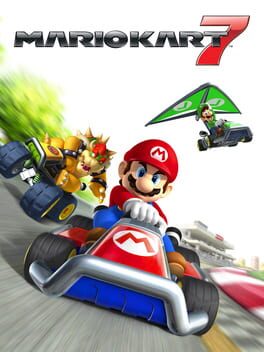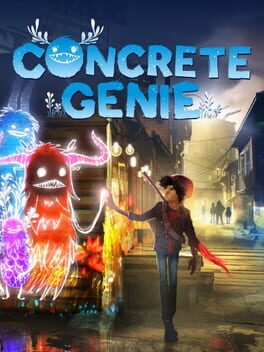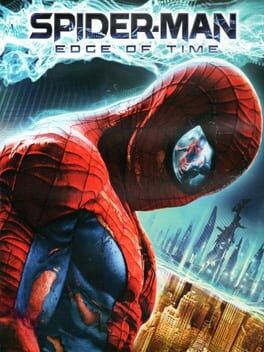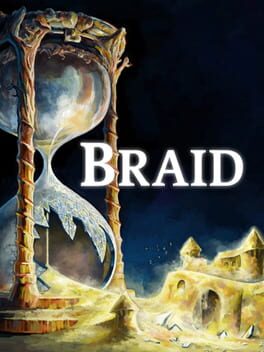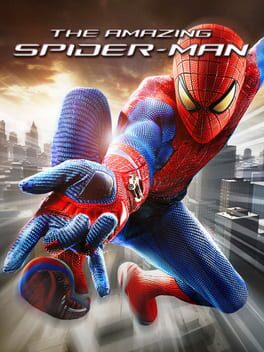KieranQW
2011
I now present a haiku. unpublished since one fateful English 105 creative writing portfolio in 2017, this is a work inspired by long nights playing Mario Kart 7 over download play in my then-girlfriend's dorm room. please enjoy this shy-ku, as she referred to it:
Shy Guy is the best.
With his kart I win the race;
I like his noise: "weeauuur!"
Shy Guy is the best.
With his kart I win the race;
I like his noise: "weeauuur!"
2019
Concrete Genie is perhaps the most honest collect-athon video game I have ever played.
This honesty makes me feel like a sucker. In one sloppy and unenthusiastic stroke of the developers’ brush, my tendency towards Trophy Completionism is spotlit and made a fool of by this game. This game, which attempts no meaningful follow-through on any of its core systems. This game, which presents a narrative experience better suited to the overflow shelves in the YA section of your local library than a years-labored-for multimedia product. This game, which only qualifies as such so far as it requires button inputs on a DualShock 4 controller to operate. This game, whose player-initiated verbs are not as varied or confident as a children’s book of color-by-numbers.
Allow me to explain: in Concrete Genie you control a boy with a big magical paintbrush. You use this paintbrush to paint on the walls of Concrete Genie’s seaside town environment. Holding the right trigger and wobbling around your accelerometer-equipped controller, you paint pictures, and you paint creatures; the titular Genies. These Genies, once painted, help you with various environmental tasks (fire Genies burn glowing red paper, electric Genies zap yellow voltage boxes, etc.). These tasks, when completed, reveal previously locked sections of the seaside town. Hanging from the walls of every building in this town are an interconnected series of string lights, as though the city beautification committee were headed up by a college freshman with a Pinterest-dictated shopping list. Paint these walls with your big paintbrush to light the lights to open gates, allowing further access to more walls to be painted. Repeat until you’ve run out of walls, or until the melatonin gummies kick in.
Additionally, there are glowing notebook pages floating around waiting to be walked into. When walked into, they offer you a new image to paint on walls, or a new cosmetic flourish for your Genie creations. Let not this chase towards glowing objects tempt you, though: It does not matter what you paint on the walls. No matter which image you choose, the lights still light. It does not matter what your Genies look like. No matter their appearance, they still complete their color-coded task.
The narrative expressed in Concrete Genie’s cutscenes gives us a little more reason to be painting these pictures and Genies everywhere: the boy with the brush is the victim of bullying. He is an artistic boy. He fondly remembers a more beautiful version of his town from his youth, before an oil spill and a whole lot of negative teenage energy dirtied up the place. The boy’s bullies tear apart his notebook of sketches, and paint Bad Graffiti all over the town. You must retrieve the pages, and put up Good Graffiti instead. You must revive the town with your art.
However, it does not matter what you paint on the walls. It does not matter what your Genies look like.
This is a problem.
Your paint action in Concrete Genie is not the kind of Super Mario Sunshine-meets-Kid Pix Deluxe experience you may be expecting, based on the concept of reviving this video game town with your art. You cannot actually paint whatever you’d like, not even in the game’s “free paint” mode. Instead, those pages you collect simply unlock new animated gifs for you to sticker onto the walls of the empty town. Your primary player interaction with everything in the world of Concrete Genie is to slap down stickers like you just blew a whole paycheck on Redbubble, and to wait for something to happen.
In order to get your Genie to do the elemental ability required to solve the puzzle you mentally pieced together minutes ago, you trigger-wobble-place the sticker gif they desire exactly where they desire it. If you were worried this might offer a little too much freedom, worry not; your Genies will tell you this placement information in loud graphic design, you can’t miss it. In order to light the town’s lights to check the progression box required to sticker down your next Genie, you trigger-wobble away using whatever your cursor autoselected on every wall of virtual string lights and wait for a little flash that says “you did it! now do it some more, idiot!”
Occasionally there are patches of wall that put a big red X over your trigger-wobble cursor. In order to sticker them down and light their lights you have to place more stickers exactly as demanded by the nearest Genie. After you do so, they will fill a meter which allows you to press a previously unused button, activating the ability to trigger-wobble-place even harder.
This is not creativity, and this is not a fun player action. This is routinely checking the exit billboards on I-94 in bumper-to-bumper traffic. There is no speed, there is no friction, there is only the slow crawl to your eventual off-ramp.
When Concrete Genie finally does reach its off-ramp, it has the decency to throw a few more verbs in the mix, but by then it's already too late. The addition of enemies to throw paint magic at and a dash ability are implemented in such a baffling way that they both don’t have enough time to make themselves interesting and they grow stale by the end of the game. The way Concrete Genie goes about pacing its final “boss encounters” is to make you tediously splash paint magic at multiple foes at once. This only makes for longer fights, not more interesting ones.
So, given its poor combat design in the end game and the utter lack of game in the paint mechanics, what is left? What is the player actually engaging with here?
The story? Well, maybe; I certainly won’t discount the possibility that Concrete Genie’s bog-standard anti-bullying story was compelling to someone, but it’s so immediately foreseeable and cliched that I’d imagine the age for real connection with its themes caps off at about ten years old. Besides, that story is only served to the player in cutscenes; it certainly does not work its way into the play experience in any meaningful way.
No, the player is compelled to continue by the completion percentage, of course. The upticking numbers next to each district of the town on your minimap are the real driving force here; that sweet ding of the regularly occurring trophy acquisition icon in the corner of the screen demands your further engagement. Because—look! You’re only a few away from that platinum! You might as well burn a few irreplaceable hours of life toiling after some odd digital item or another. Sticker down a couple different gifs in specific locations, and maybe you’ll see your little horned abominations do a special contextual dance that throws a bronze trophy your way. After all, that’s what you sick freaks with accounts on PSNProfiles dot com like to do, right?
It’s sort of ingenious, in a sense, that Concrete Genie lays out so nakedly the perversion of digital trophy hunting. I gave up on its superfluous extras after I glimpsed the freakish trick, and I still feel like a worse person for having played it. How many other games have successfully pulled the trick off, simply because they had a combat system just good enough to distract from my time being sold off by the hour? How many times have I been fooled by a game just slightly more confident in its narrative than Concrete Genie? How many times have I put off something magnificent, like Dragon Quest XI, Super Mario Odyssey, or heck, I dunno, reading Moby Dick; simply because I felt duty-bound to the mediocrity sitting on my Playstation’s hard drive? I like to think I have a lot of life still ahead of me, and those questions still scare me.
So; thank you, game development studio Pixelopus, for designing the game which would finally signal a Marie Kondo-adjacent change in my heart regarding game consumption. I couldn’t do this tidying up without you. And, apologies in advance, but I will not be playing your next game. I hope you understand.
This honesty makes me feel like a sucker. In one sloppy and unenthusiastic stroke of the developers’ brush, my tendency towards Trophy Completionism is spotlit and made a fool of by this game. This game, which attempts no meaningful follow-through on any of its core systems. This game, which presents a narrative experience better suited to the overflow shelves in the YA section of your local library than a years-labored-for multimedia product. This game, which only qualifies as such so far as it requires button inputs on a DualShock 4 controller to operate. This game, whose player-initiated verbs are not as varied or confident as a children’s book of color-by-numbers.
Allow me to explain: in Concrete Genie you control a boy with a big magical paintbrush. You use this paintbrush to paint on the walls of Concrete Genie’s seaside town environment. Holding the right trigger and wobbling around your accelerometer-equipped controller, you paint pictures, and you paint creatures; the titular Genies. These Genies, once painted, help you with various environmental tasks (fire Genies burn glowing red paper, electric Genies zap yellow voltage boxes, etc.). These tasks, when completed, reveal previously locked sections of the seaside town. Hanging from the walls of every building in this town are an interconnected series of string lights, as though the city beautification committee were headed up by a college freshman with a Pinterest-dictated shopping list. Paint these walls with your big paintbrush to light the lights to open gates, allowing further access to more walls to be painted. Repeat until you’ve run out of walls, or until the melatonin gummies kick in.
Additionally, there are glowing notebook pages floating around waiting to be walked into. When walked into, they offer you a new image to paint on walls, or a new cosmetic flourish for your Genie creations. Let not this chase towards glowing objects tempt you, though: It does not matter what you paint on the walls. No matter which image you choose, the lights still light. It does not matter what your Genies look like. No matter their appearance, they still complete their color-coded task.
The narrative expressed in Concrete Genie’s cutscenes gives us a little more reason to be painting these pictures and Genies everywhere: the boy with the brush is the victim of bullying. He is an artistic boy. He fondly remembers a more beautiful version of his town from his youth, before an oil spill and a whole lot of negative teenage energy dirtied up the place. The boy’s bullies tear apart his notebook of sketches, and paint Bad Graffiti all over the town. You must retrieve the pages, and put up Good Graffiti instead. You must revive the town with your art.
However, it does not matter what you paint on the walls. It does not matter what your Genies look like.
This is a problem.
Your paint action in Concrete Genie is not the kind of Super Mario Sunshine-meets-Kid Pix Deluxe experience you may be expecting, based on the concept of reviving this video game town with your art. You cannot actually paint whatever you’d like, not even in the game’s “free paint” mode. Instead, those pages you collect simply unlock new animated gifs for you to sticker onto the walls of the empty town. Your primary player interaction with everything in the world of Concrete Genie is to slap down stickers like you just blew a whole paycheck on Redbubble, and to wait for something to happen.
In order to get your Genie to do the elemental ability required to solve the puzzle you mentally pieced together minutes ago, you trigger-wobble-place the sticker gif they desire exactly where they desire it. If you were worried this might offer a little too much freedom, worry not; your Genies will tell you this placement information in loud graphic design, you can’t miss it. In order to light the town’s lights to check the progression box required to sticker down your next Genie, you trigger-wobble away using whatever your cursor autoselected on every wall of virtual string lights and wait for a little flash that says “you did it! now do it some more, idiot!”
Occasionally there are patches of wall that put a big red X over your trigger-wobble cursor. In order to sticker them down and light their lights you have to place more stickers exactly as demanded by the nearest Genie. After you do so, they will fill a meter which allows you to press a previously unused button, activating the ability to trigger-wobble-place even harder.
This is not creativity, and this is not a fun player action. This is routinely checking the exit billboards on I-94 in bumper-to-bumper traffic. There is no speed, there is no friction, there is only the slow crawl to your eventual off-ramp.
When Concrete Genie finally does reach its off-ramp, it has the decency to throw a few more verbs in the mix, but by then it's already too late. The addition of enemies to throw paint magic at and a dash ability are implemented in such a baffling way that they both don’t have enough time to make themselves interesting and they grow stale by the end of the game. The way Concrete Genie goes about pacing its final “boss encounters” is to make you tediously splash paint magic at multiple foes at once. This only makes for longer fights, not more interesting ones.
So, given its poor combat design in the end game and the utter lack of game in the paint mechanics, what is left? What is the player actually engaging with here?
The story? Well, maybe; I certainly won’t discount the possibility that Concrete Genie’s bog-standard anti-bullying story was compelling to someone, but it’s so immediately foreseeable and cliched that I’d imagine the age for real connection with its themes caps off at about ten years old. Besides, that story is only served to the player in cutscenes; it certainly does not work its way into the play experience in any meaningful way.
No, the player is compelled to continue by the completion percentage, of course. The upticking numbers next to each district of the town on your minimap are the real driving force here; that sweet ding of the regularly occurring trophy acquisition icon in the corner of the screen demands your further engagement. Because—look! You’re only a few away from that platinum! You might as well burn a few irreplaceable hours of life toiling after some odd digital item or another. Sticker down a couple different gifs in specific locations, and maybe you’ll see your little horned abominations do a special contextual dance that throws a bronze trophy your way. After all, that’s what you sick freaks with accounts on PSNProfiles dot com like to do, right?
It’s sort of ingenious, in a sense, that Concrete Genie lays out so nakedly the perversion of digital trophy hunting. I gave up on its superfluous extras after I glimpsed the freakish trick, and I still feel like a worse person for having played it. How many other games have successfully pulled the trick off, simply because they had a combat system just good enough to distract from my time being sold off by the hour? How many times have I been fooled by a game just slightly more confident in its narrative than Concrete Genie? How many times have I put off something magnificent, like Dragon Quest XI, Super Mario Odyssey, or heck, I dunno, reading Moby Dick; simply because I felt duty-bound to the mediocrity sitting on my Playstation’s hard drive? I like to think I have a lot of life still ahead of me, and those questions still scare me.
So; thank you, game development studio Pixelopus, for designing the game which would finally signal a Marie Kondo-adjacent change in my heart regarding game consumption. I couldn’t do this tidying up without you. And, apologies in advance, but I will not be playing your next game. I hope you understand.
I do not miss the era of Activision's control over the Spider-Man license. However, I do miss when Spider-Man games with distinctly comic-booky narrative texture and uniquely sorta-busted game design were something to look forward to. If Insomniac's games offer the taste of an upscale restaurant close to your new place in the city, games like Edge of Time deliver the sweet taste of your hometown Mexican joint; the one that drenches every entree in too much sauce but whose queso dip still demands a place in your memory.
TBD
a perfectly cute ten minute distraction. only two endings, both the result of only a few moments' worth of space bar tapping. I only wish the "date" portion were longer before the twist begins, so that I may have gotten invested before things went awry. a worthwhile little bit of game-jamming, nonetheless! I'm excited to seek out what else Mimi Chiu has created.
2008
i'm a tremendous fan of everything this game was able to accomplish. its open-ended presentation means infinite and distinct interpretations by all of its players; to me it reads as equal parts personal essay and adaptation of orpheus and eurydice, all wrapped in the assumed narrative structure of a super mario. what a brilliant little piece of art!
The Amazing Spider-Man was special to me as a teenager. I was a Nintendo kid, and back in 2012 my house was still over a year out from owning an HD TV — not to mention any consoles that could take advantage of such technology. to get my gaming fix, I had the Wii and all its access to Virtual Console games, and my beloved Nintendo handhelds. all this to say: I was used to getting the short end of the stick when it came to current gen games, and content to play watered down ports if they came over to the Wii at all. so when this game got a 3DS release — one which bore the weight of everything but the open world from its console counterpart — I was suitably amazed.
I bought The Amazing Spider-Man the day it released, a month before the movie came out, spoiled the hell out of the movie’s ending, and had a great time. then I gave myself that great time again, and again, and again. long car trips, at friends' houses, suspended above my head on late summer nights in my teenagerly loft bed; The Amazing Spider-Man went with me wherever I brought my 3DS. what the handheld port of this game was able to achieve is still impressive, and now after playing both the slightly upgraded Ultimate Edition on Wii U as well as its original release on the PS3, I can say with certainty that it is the ideal way to play. The Amazing Spider-Man benefits tremendously from the lower expectations that come with gaming on the go.
playing this game on a big screen, eight years later: its failures are impossible to ignore — and so are its petty thefts. The Amazing Spider-Man is a cheap Arkham clone through and through. normally I would hesitate to draw direct comparisons — I hardly think the Arkham games are great enough to cudgel other games against — but this game is blatant about lifting the design philosophy of that series. problem is, it lacks all of the polish of their combat and exploration formulae.
items are strewn across levels seemingly at random, often blending into the drab and forgettable environments. upgrades those items help you unlock are very clearly gated behind specific narrative points in the game, so it never feels like you’re any more powerful than the game intends you to be. there are only ever a few (if more than one) open upgrade tracks to apply your tech/level points to. the game could have rewarded the player with a new ability at the end of every story mission, and there would have been no difference in the pace of progression. there is no purpose to the EXP system, as a result. just a nice little bar-go-up animation, which sure feels like progress — until you think about it for any longer than it appears on screen.
as for the combat system, enemy attack animations are finicky and the reach of their attacks are never concrete, at some points allowing them to slide halfway across the floor to reach you. Arkham’s harder difficulties test the player by taking away attack indicators and shortening response time, while keeping animations consistent. if this game were to do the same, it would be virtually impossible, as attack patterns and animations are much too imprecise to telegraph anything to the player. you need that buzzing Spider-Sense to survive, no matter how skilled you grow to be at mashing the punch and dodge buttons.
all of this is made dramatically worse the second the game throws a giant robot at you. here's one way in which this game is genuinely unique from the Arkham series: Batman never got to swing around at mach speed fighting mechs.
with these boss battles, Beenox has offered an addition to the formula they spend the rest of the game ripping off, though much like WB Montreal broke the combat system's back with shitty additions in Arkham Origins, the folks at Beenox completely lose track of the design at the heart of their stolen combat system.
for context: this time around I played the game on the hardest difficulty. this was both an effort to speed up the acquisition of PSN trophies, and because I’ve played the game a dozen times in my life. the god darn robot bosses were the worst part of the experience. on every difficulty, they’re glorified quick time events. you wait around for them to finish whatever laser they’re blasting, maybe shoot them with some webbing, then press the Spider-Man Stuff button (R1 on PS3) and watch as Spider-Man does an attack for you. if you’re unlucky, that attack may require you to mash the circle button to make him punch/pull/web extra hard. riveting stuff. on Super Hero difficulty, the already repetitive boss fights become rigorous exercises in tedium and frustration, as said laser attacks —
(often undodgeable! by the way! you just have to hope and pray that Spider-Man is at the right point in his swing animation to avoid them. hope and prayer are two game mechanics I was not expecting to encounter)
— will kill you in one to two hits and force you to fight through all the phases of the fight again, pressing R1 and mashing circle until either your finger cramps, your eyes dry out, or you fall asleep. these fights weren’t designed for Super Hero difficulty. neither was the rest of the game. it’s clear the only consideration involved in difficulty settings was swapping around a few numbers on enemy health and damage output.
the game isn’t too visually impressive either. it is not as egregious as its sequel; I mean, textures aren’t disappearing in front of your eyes, and you never have to stare down a painfully off-model Peter Parker face — but it's still not worth celebrating. even keeping the limitations of the PS3 in mind, this game is hard on the eyes. a painful yellow/sepia filter is put on the city in an attempt to look more realistic, and while that impressed me as a young teen watching an E3 reveal trailer, nowadays it makes the game look completely washed out. doesn’t help much that all the level environments are grey hallways or brown/green sewers, wherein the only flashes of color are the visually grating lens flares leaping off of computer screens or florescent lights. I’m glad I wore blue light glasses while playing this game; I may have saved myself another year before all my screen-staring makes me go blind.
there are plenty of other nitpicks. the fact that traversing the city to find comic pages feels just a bit too slippery, that webs are back to attaching to nothing, that the writing is truly hack (they take away Peter’s powers and then don’t use that as an opportunity to explore how his sense of responsibility works without them! he just gets them right back after you finish the “no web swinging” bit! how lame!), that the voice acting is so subpar even Nolan North sounds asleep at the microphone; but at this point all those things are just ugly ornaments on a tree that’s already falling over. I can’t say I’d recommend this to anyone other than the most seasoned Spidey fan, but if they’re like me, they wouldn't have a particularly good time either. I should have left this in my memory as a wonderful 3DS experience.
I bought The Amazing Spider-Man the day it released, a month before the movie came out, spoiled the hell out of the movie’s ending, and had a great time. then I gave myself that great time again, and again, and again. long car trips, at friends' houses, suspended above my head on late summer nights in my teenagerly loft bed; The Amazing Spider-Man went with me wherever I brought my 3DS. what the handheld port of this game was able to achieve is still impressive, and now after playing both the slightly upgraded Ultimate Edition on Wii U as well as its original release on the PS3, I can say with certainty that it is the ideal way to play. The Amazing Spider-Man benefits tremendously from the lower expectations that come with gaming on the go.
playing this game on a big screen, eight years later: its failures are impossible to ignore — and so are its petty thefts. The Amazing Spider-Man is a cheap Arkham clone through and through. normally I would hesitate to draw direct comparisons — I hardly think the Arkham games are great enough to cudgel other games against — but this game is blatant about lifting the design philosophy of that series. problem is, it lacks all of the polish of their combat and exploration formulae.
items are strewn across levels seemingly at random, often blending into the drab and forgettable environments. upgrades those items help you unlock are very clearly gated behind specific narrative points in the game, so it never feels like you’re any more powerful than the game intends you to be. there are only ever a few (if more than one) open upgrade tracks to apply your tech/level points to. the game could have rewarded the player with a new ability at the end of every story mission, and there would have been no difference in the pace of progression. there is no purpose to the EXP system, as a result. just a nice little bar-go-up animation, which sure feels like progress — until you think about it for any longer than it appears on screen.
as for the combat system, enemy attack animations are finicky and the reach of their attacks are never concrete, at some points allowing them to slide halfway across the floor to reach you. Arkham’s harder difficulties test the player by taking away attack indicators and shortening response time, while keeping animations consistent. if this game were to do the same, it would be virtually impossible, as attack patterns and animations are much too imprecise to telegraph anything to the player. you need that buzzing Spider-Sense to survive, no matter how skilled you grow to be at mashing the punch and dodge buttons.
all of this is made dramatically worse the second the game throws a giant robot at you. here's one way in which this game is genuinely unique from the Arkham series: Batman never got to swing around at mach speed fighting mechs.
with these boss battles, Beenox has offered an addition to the formula they spend the rest of the game ripping off, though much like WB Montreal broke the combat system's back with shitty additions in Arkham Origins, the folks at Beenox completely lose track of the design at the heart of their stolen combat system.
for context: this time around I played the game on the hardest difficulty. this was both an effort to speed up the acquisition of PSN trophies, and because I’ve played the game a dozen times in my life. the god darn robot bosses were the worst part of the experience. on every difficulty, they’re glorified quick time events. you wait around for them to finish whatever laser they’re blasting, maybe shoot them with some webbing, then press the Spider-Man Stuff button (R1 on PS3) and watch as Spider-Man does an attack for you. if you’re unlucky, that attack may require you to mash the circle button to make him punch/pull/web extra hard. riveting stuff. on Super Hero difficulty, the already repetitive boss fights become rigorous exercises in tedium and frustration, as said laser attacks —
(often undodgeable! by the way! you just have to hope and pray that Spider-Man is at the right point in his swing animation to avoid them. hope and prayer are two game mechanics I was not expecting to encounter)
— will kill you in one to two hits and force you to fight through all the phases of the fight again, pressing R1 and mashing circle until either your finger cramps, your eyes dry out, or you fall asleep. these fights weren’t designed for Super Hero difficulty. neither was the rest of the game. it’s clear the only consideration involved in difficulty settings was swapping around a few numbers on enemy health and damage output.
the game isn’t too visually impressive either. it is not as egregious as its sequel; I mean, textures aren’t disappearing in front of your eyes, and you never have to stare down a painfully off-model Peter Parker face — but it's still not worth celebrating. even keeping the limitations of the PS3 in mind, this game is hard on the eyes. a painful yellow/sepia filter is put on the city in an attempt to look more realistic, and while that impressed me as a young teen watching an E3 reveal trailer, nowadays it makes the game look completely washed out. doesn’t help much that all the level environments are grey hallways or brown/green sewers, wherein the only flashes of color are the visually grating lens flares leaping off of computer screens or florescent lights. I’m glad I wore blue light glasses while playing this game; I may have saved myself another year before all my screen-staring makes me go blind.
there are plenty of other nitpicks. the fact that traversing the city to find comic pages feels just a bit too slippery, that webs are back to attaching to nothing, that the writing is truly hack (they take away Peter’s powers and then don’t use that as an opportunity to explore how his sense of responsibility works without them! he just gets them right back after you finish the “no web swinging” bit! how lame!), that the voice acting is so subpar even Nolan North sounds asleep at the microphone; but at this point all those things are just ugly ornaments on a tree that’s already falling over. I can’t say I’d recommend this to anyone other than the most seasoned Spidey fan, but if they’re like me, they wouldn't have a particularly good time either. I should have left this in my memory as a wonderful 3DS experience.
